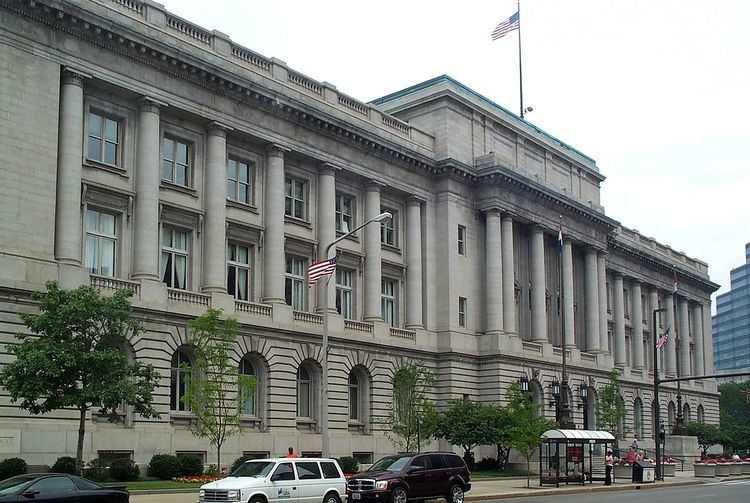Name J. Dyer | Role Architect | |
 | ||
Structures | ||
J. Milton Dyer (April 22, 1870 – May 27, 1957) was a prominent Cleveland, Ohio architect.
Contents
Background
Dwyer was born in Middletown, Pennsylvania where his father had a hardware business. In 1881 his family moved to the Rock's Corners area (near East 55th and Woodland Avenue) and Dyer attended Central High School, worked for Brown Hoisting where he earned a scholarship to Case Institute of Technology. He later studied at the École nationale supérieure des Beaux-Arts in Paris.
Professional career
He worked for Warner & Swasey (Ambrose Swasey and Worcester R. Warner's firm) for several years, and Frank Walker, Henry Weeks, and Reynold Hinsdale worked in his office. The Architectural Record published a 1906 feature that noted him as an example of professionally educated architects moving to smaller cities.
Dyer was a member of Cleveland's Tavern Club, established 1892-93, and designed a building for the group when it moved from a leased property at 968 Prospect Street to its present building on 1 January 1905. "The exterior construction and the traditional interior decor of the building" have remained essentially the same since the club's beginning. He designed several buildings on Cleveland's Euclid Avenue.
Spirit of Progress
J. Milton Dyer was selected as the architect for an exhibition of Cleveland products staged in 1909 called the Spirit of Progress. Erected in 47 days (March 30-May 24), the Exposition Building is said to have had "a larger ground floor exhibit area than any other exposition structure in the United States" with 72,030 square feet (6,692 m2) as well as the area of an armory and a bridge connecting the two buildings, for "a grand total of 114,656 square feet, a space greatly in excess of that of any previous home product exhibition".
The building included "wood covered with staff, and the fireproofed and waterproofed canvas roof is supported by three huge masts mounted on structural iron supports which are anchored to thirty-ton blocks of iron-weighted concrete. From these supports quarter-poles are extended, adding strength to the network of steel cables that holds the roof. At the west of the main building is a Pompeiian garden of novel design and with original features." The interior walls were covered with white bunting and "fountains, statuary, flowers, and shrubbery" used for effect. Dwyer designed two massive statues that were carried out by sculptor Herman Matzen placed in the approach to the exhibition.
Promotion was carried out by: "One million Exposition gum seals, more than 1700 monthly proof-sheets, 25,000 invitation booklets, and 100,000 postcards were printed and circulated; and 15,000 posters and window cards were distributed locally and through all cities and towns within a radius of 200 miles. A slogan competition drew out 3,000 participants." A souvenir book of the Exposition contained a directory of the exhibitors, a "classified" list of Cleveland manufacturers, and "other matter pertaining to local industries". Entertainment included the "best" local bands, J. Powell Jones and the boy chorus of 500, and "other features of a high class character".
Personal life
Dwyer lived with his mother on East 71st Street, until she died in 1923, and he never married. After his mother died he lived with his sister until she died in 1954. He is buried in Woodland Cemetery in Cleveland.
Selected works
(Believed to be still in existence unless otherwise noted)
